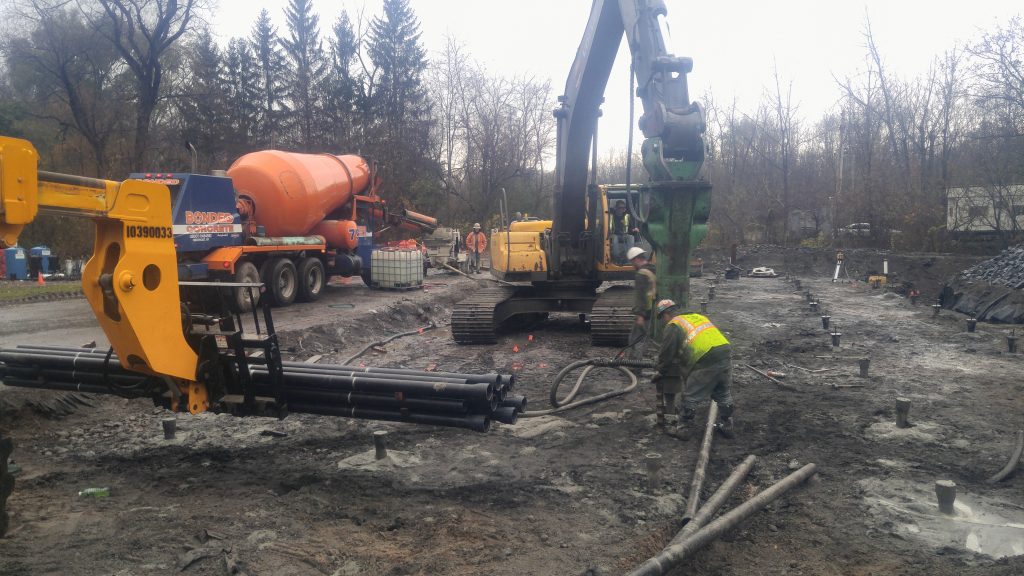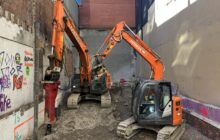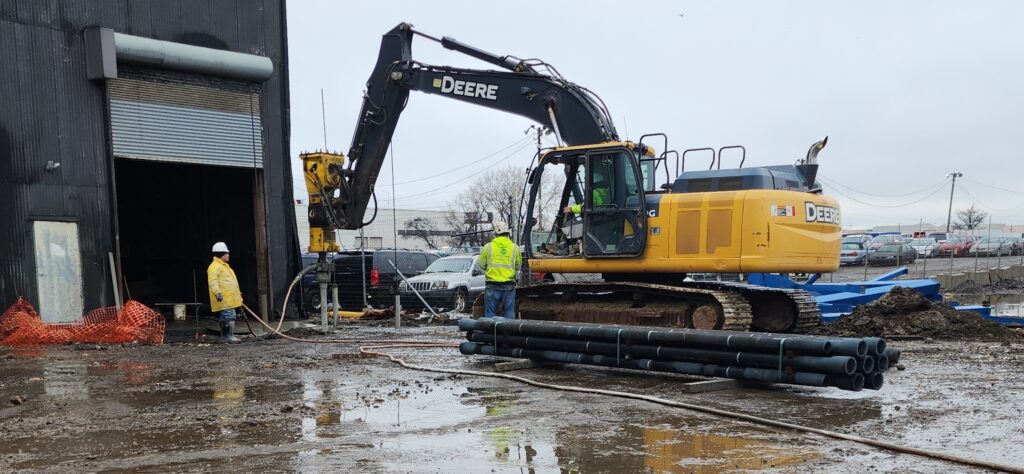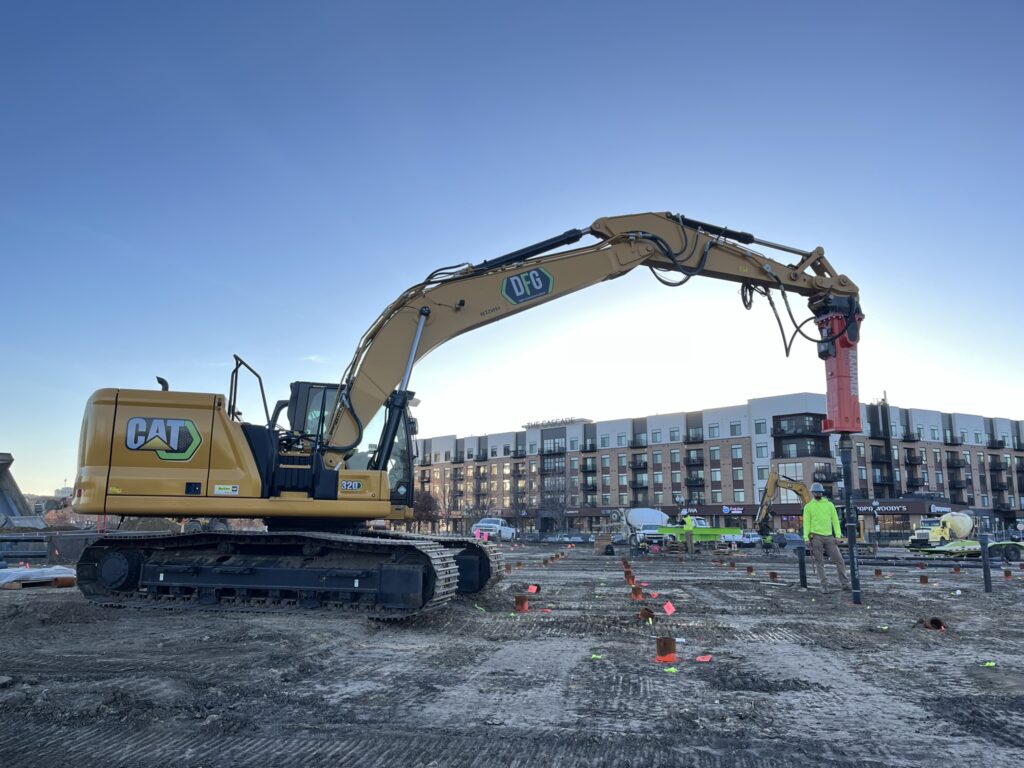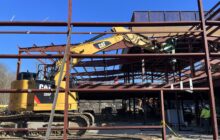Ductile Iron Piles Installed At Rates Exceeding 1,000 Feet Per Day
Project Description:
Large-scale renovations and improvements to the existing General Electric (GE) facility in Schenectady, New York included the construction of a new Wastewater Treatment Facility. The facility building containing tanks, pumps and other fixtures was supported on a new 36-ft by 85-ft by 2-ft thick mat slab foundation.
Geotechnical Conditions:
Subsurface conditions encountered at the building location generally consisted of an upper layer of uncontrolled fill that extended up to 16 feet below grade. The uncontrolled fill contained a mixture of sand, silt and debris (brick, ash cinders/slag, wood, concrete, etc). The fill was underlain by a thin layer of mixed sand and organics followed by interlayered zones of loose to medium dense sand and silty sand as well as soft to stiff silt and clay to the maximum explored depth of 51 feet.
Project Challenges:
Providing a rapidly-installed pile system with a high degree of confidence in achieving pile design capacity in the variable fill conditions.
Advantages
- Rapid turn-key operation (design through installation) in under 2 weeks
- Installation rates exceeding 1,000 feet per day
- High confidence in achieving capacity compared with helical piles
- Superior load test performance
Design and Construction Solution:
Design documents for mat support specified a total of 57 helical piles with a working capacity of 40 kips. After review of the variable fill and underlying loose/soft soil conditions, concerns were raised that the specified helical piles would have issues penetrating the fill and developing the working capacity. Further, with winter conditions rapidly approaching, schedule considerations to procure and install the piles were becoming critical to the project timeline.
Helical Drilling, Inc. (Helical) proposed an alternative to the helical pile solution using friction Ductile Iron Piles (DIPs) to generate the capacity. The design approach featured a Series 98/6.0 (98 mm diameter with 6 mm wall thickness) pile installed with a 180 mm conical grout shoe to replace the helical piles on a 1:1 basis. The friction DIPs would be continuously grouted during installation by pumping sand-cement grout through the pile and out the tip of the conical grout shoe to completely encapsulate the pile and develop bonding in the soils below the fill.
Helical was awarded the work to design and install the Ductile Iron Piles. Within one week of the project award, Helical completed the DIP design, procured material and mobilized to the site to install the 49-ft long test pile. A full-scale tension load test was performed to 200% of the design load to verify the design capacity. Results showed less than 0.4 inches of movement at the 200% load (80 kips). A total of 55 production piles were then installed to depths of 49 feet in only 2 working days. The work including design, procurement, mobilization, testing, installation and demobilization was completed within only 2 weeks of the project award allowing foundation work to proceed in advance of winter conditions.
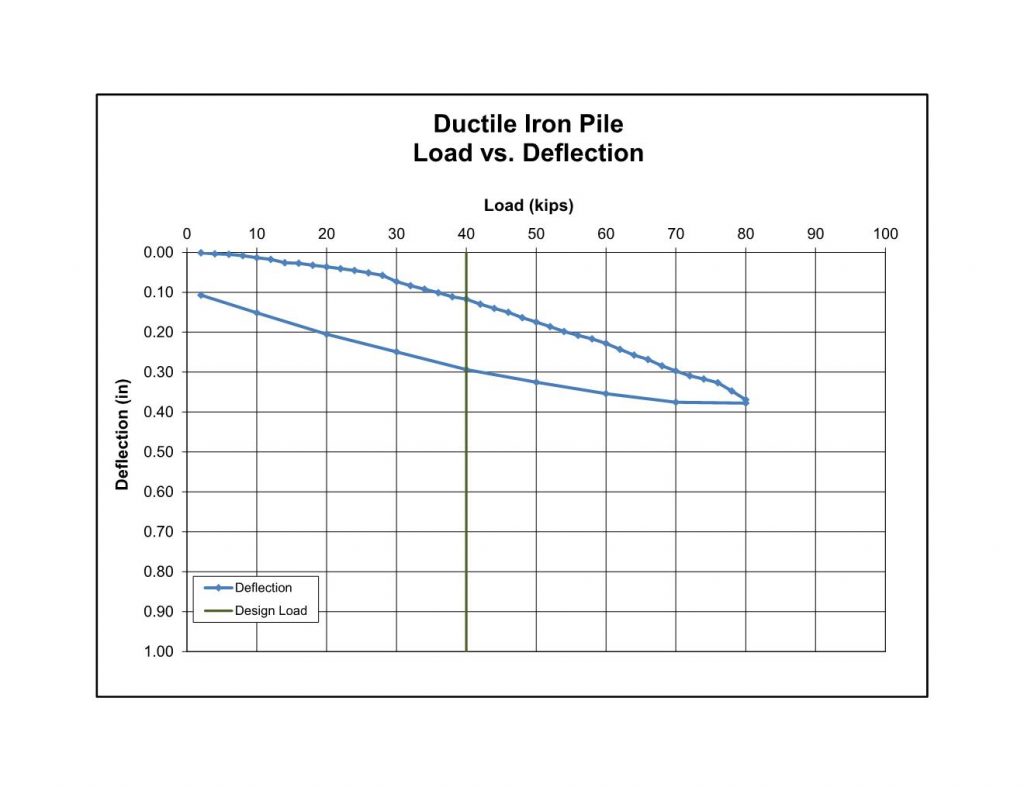
Project Team Members
DIP Design/Build Partner: Helical Drilling, Inc.
Geotechnical Engineer: Daniel G. Loucks, PE
Environmental Contractor: Ground/Water Treatment & Technology, LLC
General Contractor: Chicago Bridge & Iron (CB&I)
Structural Engineer: MRH Engineering, P.C.
Owner: General Electric (GE)

